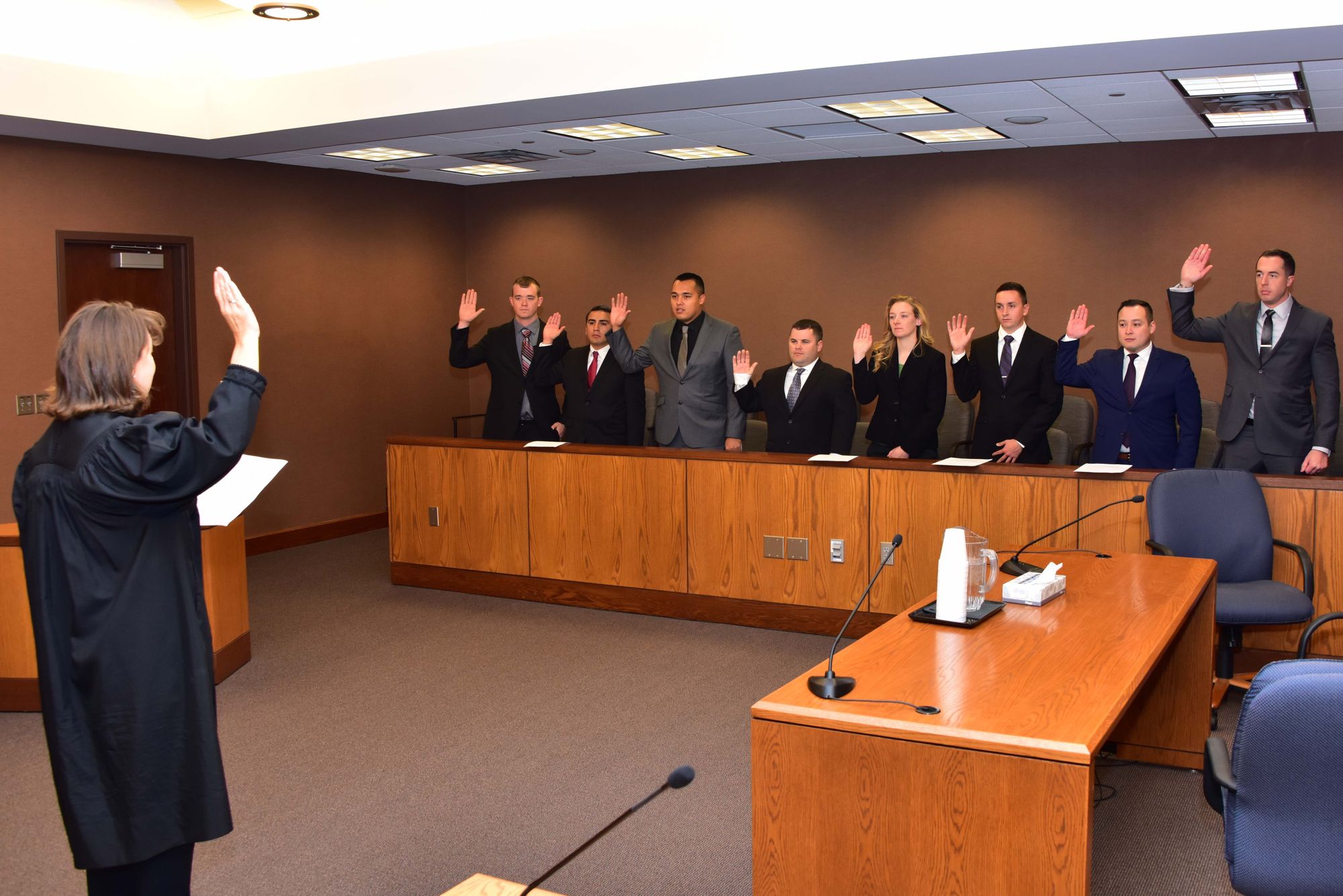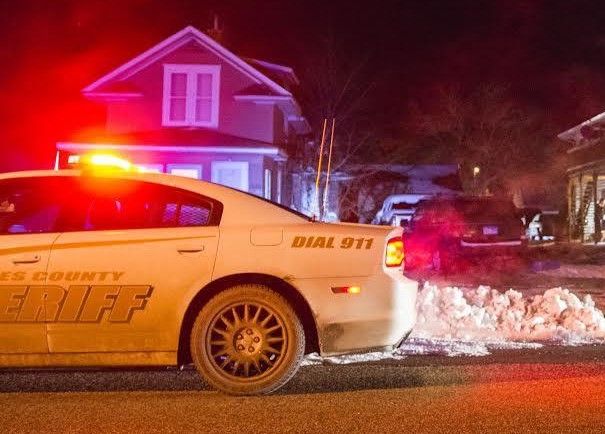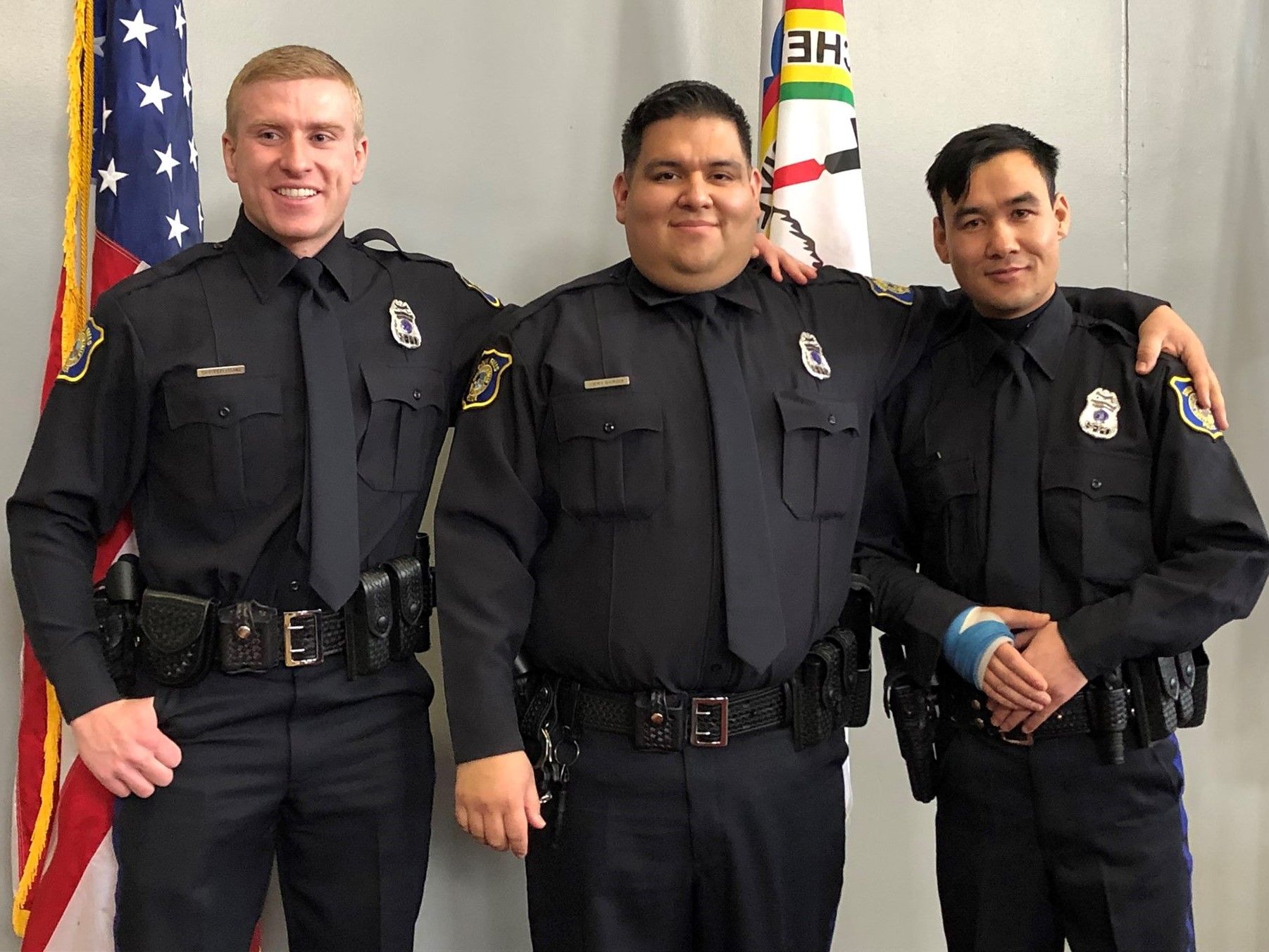Law enforcement agencies across South Dakota and the nation are struggling to find enough qualified people to serve as police officers, potentially putting the safety of the public and existing on-duty officers at risk.
Recruitment challenges and difficulty in retaining officers have caused some departments to endure reduced officer counts at a time when populations are increasing. That can mean fewer officers on the road or less efficiency among officers who are forced to work long hours to pick up the slack.
The decline in applicants, experts say, is due to a combination of relatively low pay, high stress and danger on the job, increased training and certification requirements and general disinterest in policing among recent college and technical school graduates.
Retention challenges, particularly in small, rural departments in South Dakota, are being driven by a historically low overall unemployment rate, a lack of opportunities for career advancement, and long workdays and on-call periods that intrude on living a full life away from the job.
Hovering over the hiring challenges is a negative public discourse on social media, about policing, driven by fallout from highly publicized, videotaped incidents of police misconduct and resulting national protests.
Nationally, the number of full-time sworn officers on duty fell by 11 percent from 1997 to 2016 as a rate per 1,000 residents, according to the federal Bureau of Justice Statistics. Urban departments are seeing the biggest decline in officer applications; the city of Seattle, for example, saw a 90 percent decline in applicants over the past decade.
South Dakota agencies face similar challenges. The Sioux Falls Police Department received 634 applications for open officer jobs in 2010, but only 373 applications during a 12-month period in 2018-19, a 41 percent decline.
Meanwhile, the number of officers in Sioux Falls has not kept up with the population. From 2010 to 2019, the number of officers on duty rose by 13.5 percent while the population rose by 21.4 percent.
“Everybody nationwide has challenges in that way, just because of the unique people you’re looking for and because they’re not out there in the numbers we would like,” said Lt. Toby Benson, head of recruitment for the Sioux Falls Police Department. “What we’re trying to do is find the right people because obviously law enforcement is a very specific skill set, and it’s not right for everybody.”
Officer pay has risen steadily in South Dakota over the past decade, with most agencies paying about $40,000 to $48,000 a year to start with full benefits. The statewide average salary for all jobs is about $41,000, though not many career fields carry the dangers of police work.
Larger departments typically have enough officers to handle fluctuations in hiring without great risk. But smaller South Dakota agencies – including 34 sheriff’s offices with four deputies or fewer and 19 cities with only one or two officers — are less able to maintain service levels when staffing falls short.
Recruitment efforts have been heightened in recent years to find more applicants overall but also more women and minorities interested in the field.
Administrators from departments both large and small emphasize, however, that police agencies are increasing training and certification standards and not lowering them in order to lure more applicants. They also stress that public safety remains paramount whether they are fully staffed or have open positions.
“Even with the number of individuals we’re down right now, we’re still able to provide an adequate level of safety for the citizens of South Dakota and those traveling through our state,” said Lt. Randi Erickson, director of training and professional standards for the South Dakota Highway Patrol.

Little leeway for small departments
If the number of officers on a police force falls too low, the safety of the public and the on-duty officers can be threatened, particularly in small departments that cover large swaths of geography.
Years ago, the Cheyenne River Sioux Tribe in northwestern South Dakota had nearly two dozen certified law enforcement officers on its force. Now, due to funding reductions and difficulty in hiring qualified applicants, the force is down to about 10 officers, according to Capt. Joe Brings Plenty of the Cheyenne River tribal law enforcement agency.
At times, that means only two or three officers are on patrol and responding to calls on the reservation of about 4,300 square miles and roughly 18,000 residents.
“If we have events coming up, we can prepare, but if it’s just a shift and something is happening and the officer needs help, that’s a huge safety factor,” Brings Plenty said.
Officers in the small tribal agency, with its headquarters in Eagle Butte, are often on-call to respond while off duty, adding to stress and pressure on officers and making the job less desirable to new recruits.
“Our funding source has shrunk and our population has grown,” Brings Plenty said. “Even though we have a smaller town, we take an enormous number of calls.”
The instantaneous and expansive reach of social media can hurt a police agency’s reputation and morale if someone is unhappy how an incident played out, Brings Plenty said.
“With social media, if somebody isn’t happy, they’re going to let the world know they’re unhappy,” he said.
The complaints, whether founded or unfounded, can tarnish an agency’s reputation in the community and hurt recruitment, especially in a department seeking to build its force by hiring mostly local candidates.
The Cheyenne River force looks to its corrections staff, including workers at its detention facility, as a sort of farm club for future patrol officers. Leaders in the agency also reach out to children and youth at career days and other events to gain the trust of young people and hopefully spark an interest in a career in law enforcement, Brings Plenty said.
“Some of the youth that you meet out there, they’re intrigued with law enforcement, the idea of it,” he said. “The little ones, they want you to put on your lights and sirens. It shows them what we do, and they get to meet the officers on a more human level.”
They've built up something in their head and this is what it's like and what I want to do, but when they see the daily grind and experience what we do with the stresses and the long hours, it's not always what they thought. - Lt. Toby Benson, head of recruitment, Sioux Falls Police Department
Small staffs juggle stressful situations
According to the 2018 crime report released recently by the state Attorney General’s Office, staffing surveys show several South Dakota agencies have limited officer counts at any given time.
The cities of Avon, Kadoka, Kimball, Lake Norden, Menno, Murdo, Platte, Scotland and Tripp have only one officer. Municipal forces with only two officers include Alcester, Clark, Eagle Butte, Jefferson, Faith, Freeman, Parkston, Philip and Tyndall, according to the report.
Finding qualified applicants to fill positions in remote rural areas is difficult and having a single opening on a small force can dramatically affect the safety of the community and the officers themselves.
Jeremy Wellnitz, chief of police in Clark, S.D., is one of two full-time officers in the city of about 1,050 people located 30 miles west of Watertown. Even with two officers and a pair of part-time officers who help out on weekends, providing 24-hour police service puts a great burden on Wellnitz and his full-time colleague.
On a recent day, Wellnitz took his first call at 3:51 a.m. and didn’t return home until 4 p.m. During a phone call with a reporter, a trespassing complaint came in and Wellnitz got back in his patrol car and responded to the incident.
He said it is a challenge to find a qualified applicant willing to move to Clark for a $40,000-a-year salaried position that requires 12 to 14 hours a day on patrol and also to be on call almost constantly when not on duty.
One major drawback of small forces is that it is nearly impossible for a full-time officer to go on vacation. “That’s one major downfall in a small department,” he said.
After leaving many hours of vacation time on the table in recent years, Wellnitz said the Clark City Council agreed to pay up to 40 hours of lost vacation time each year to its officers.
But the extra pay doesn’t reduce stress the way a vacation could, Wellnitz said. “I’d rather take a vacation and spend some time away to refresh and regroup,” he said.
The challenge of recruiting a qualified officer will soon become real for Wellnitz as he prepares for the departure of the other full-time officer who will be deployed for about a year with the Army Reserves.
In addition to the typical recruiting challenges, Willnitz faces the hurdle of finding a qualified candidate willing to move there for only a 1-year stint.
If he can’t hire someone, Wellnitz assumes he will be working more hours than ever during his colleague’s deployment.
“I could try to hire somebody, but I could only have them for basically a year, and nobody wants to come out to Clark to work for just one year,” Wellnitz said.

Recruiting hard, seeking diversity
Benson, head of recruiting for Sioux Falls police, said the department aggressively recruits new officers throughout the year.
The department, which has 260 officers and is fully staffed at 269, has about 20 employees who visit colleges and technical schools about three times a month to meet with potential officer candidates in classes or at educational seminars. A few times a year the recruiters, who are full-time patrol or administrative officers, also attend job fairs to find candidates, mainly targeting Iowa, Minnesota, Nebraska, North Dakota and South Dakota. A main goal is to meet candidates in person to answer their questions but also to sell the idea of working in the agency and living in Sioux Falls.
Recent graduates or late-stage college or tech school students take a different approach to a job hunt than candidates in the past. These days, Benson said, officer candidates want information about the job but also the community where they will live and specifics about opportunities for career advancement or specialties such as detective work or handling dogs.
“The younger people now are looking at communities more than they did before…they’re asking, ‘What do you have to offer?’” Benson said. “They’re looking for a place to live primarily and then they think about work.”
Benson said the best officer candidates see policing as a calling or a mission to help others and keep communities safe, but that isn’t always the case.
“There’s been a mindset shift,” said Benson, a native of Sioux Falls. “When I started 24 years ago, this was one of those dream jobs. It was what you wanted to do and all you thought about. But people now aren’t as sure if it’s what they want to do.”
Retaining officers has also become a challenge for many departments and is one major cause of the overall officer shortage.
“They’ve built up something in their head and this is what it’s like and what I want to do, but when they see the daily grind and experience what we do with the stresses and the long hours, it’s not always what they thought,” said Benson.
Erickson, the highway patrol lieutenant, said potential hires generally ask three questions: how much is the pay, what shifts will they work and where will they have to live. Most candidates want to live in populated areas with more services, he said.
Even with aggressive recruiting, the agency is unable to reach full staffing, Erickson said. According to the 2018 state crime report, the department at the time of its survey had 181 patrol officers. The fully budgeted patrol staff would be 193.
Brendyn Medina, spokesperson for the Rapid City Police Department, said the agency is generally able to hire enough people to compensate for retirements and the normal turnover of officers.
“We do a pretty good job on trying to stay on top of our number,” Medina said. “But over the years, we’ve had to think a little more creatively to try in our recruitment efforts to garner interest in the law enforcement field.”
Recent efforts include more aggressive attempts to attract officer candidates who reflect the diversity of the community, which mostly means trying to recruit women and Native Americans.
In mid-March, the department hosted a recruitment event called Strong{HER} focused on educating potential female candidates about police work and employment opportunities.
Along with the Pennington County Sheriff’s Office, the Rapid City Police Department also participates in the Akicita Mentorship Program that pairs working officers with Native American students in the criminal justice program at Western Dakota Tech.
The intent of Akacita — the Lakota word for “soldier” or “warrior” — is to heighten interest in law enforcement among Native Americans while building relationships between police agencies and Rapid City’s largest minority population.
The program has seen some early success, as have efforts to lure more women into policing, said Peter Ragnone, criminal justice program director at WDT.
Women made up about half of the fall 2018 class of new enrollees in criminal justice at the technical school, he said.
Ragnone, who spent about 25 years on the Rapid City police force, said that when he was hired as an officer in 1991 more than 100 people applied for about five openings, a ratio of 20 applicants for one job.
Now, he said, the agency and others in South Dakota typically see about only three applicants for each open officer position.

Battling distrust of the profession
Ragnone said the typical turnover rate among the state’s roughly 1,700 law enforcement officers is about 10 percent per year. The high rate puts great pressure on departments statewide, especially those with larger forces, to fill those 170 positions just to keep up.
Enrollment in the WDT justice program has been steady, with about 50 new students in fall 2018, Ragnone said.
Still, those and others who seek to become certified in law enforcement at colleges and tech schools cannot meet the increasing demand caused by rising population and a growing population of officers reaching retirement age, Ragnone said.
“Our program numbers are good; larger than what we see in recent years, but the demand also has increased, and the demand is more than what our program alone could supply,” he said. “It is definitely what we would call an applicant’s market because of the opportunities.”
National experts and some police officials in South Dakota say interest in becoming an officer was dampened by the recent spate of high-profile incidents in which police officers have become embroiled in use-of-force and racial controversies or have been videotaped beating or killing unarmed citizens.
Ragnone said he discusses those events with his students who often see those incidents as caused by poor decision making on the part of an individual officer and not as a larger trend in policing.
“My students seem to think that these are individual decisions, and whether an officer is a hero or a heel is based on decisions that the officer made on their own,” Ragnone said.
However, the vilification of officers and distrust in some communities has likely lowered the interest in law enforcement as a career for some young people, said David McNeil, chief of the Aberdeen Police Department and president of the South Dakota Police Chiefs’ Association.
“I can see that some people would have an apprehension about going into law environment because of those very publicized national incidents, those tragic situations that have occurred,” McNeil said. “If people have a limited connection or frame of view or understanding of what police do, maybe they would be less inclined to explore this career, or parents might try to persuade their recent college graduate to look somewhere other than law enforcement.”
When McNeil entered law enforcement 27 years ago, an open position as a patrol officer would attract up to 250 applications from people eager to be an officer.
“In recent years, we have had the jobs open until filled, so somebody can come in off the street and start the process,” McNeil said.
McNeil and others say a quick solution to the officer shortage is unlikely, so they stress to front-line officer that every interaction with a citizen is a chance to form a lasting positive impression that could pay off through increased officer applications down the road.
“In general, we have to do a better job of showing our communities what their law enforcement agencies do for them” McNeil said. “What are our operations, our strategies and our philosophies to explain our mission and be better connected.”
Many agencies are using social media to reach out to the public to show the positive sides of policing, McNeil said.




